Last Chance to Catch NYC's Holiday Notalgia Train
We met the voices of the NYC subway on our nostalgia ride this weekend!


If you’re looking for a place to take in nature that is more off-the-beaten path and less crowded than some spots in New York City, the daylighted section of the Saw Mill River in Yonkers is a great choice, accessible by public transit via Metro North and of course, by car. It’s a stunning example of environmental and urban design melded together, set to the backdrop of a historic train station.
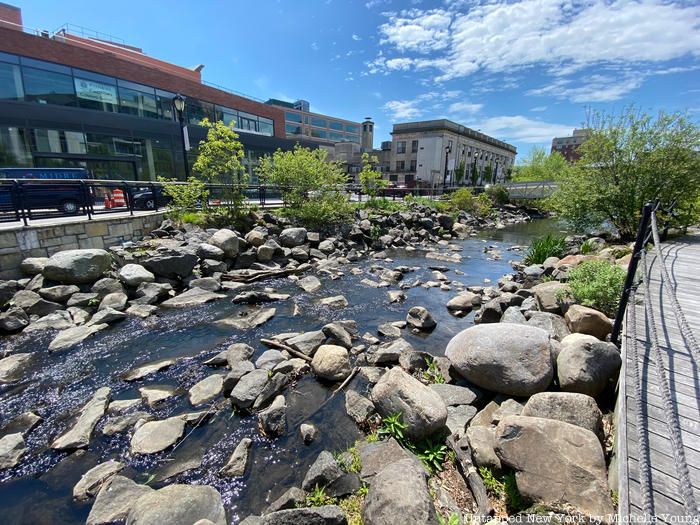
The Saw Mill River is a tributary of the Hudson River in Westchester County, flowing from a pond near Chappaqua to downtown Yonkers, also known as Getty Square. Many New Yorkers are probably familiar with the river, as it flows parallel to the Saw Mill River Parkway and directly through Yonkers. Yet, the river hasn’t always been its relatively pristine self, home to habitats of eels and egrets. About ten years ago, the river was covered by a concrete flume in Yonkers to halt the river’s frequent floods and to open space for construction and development.
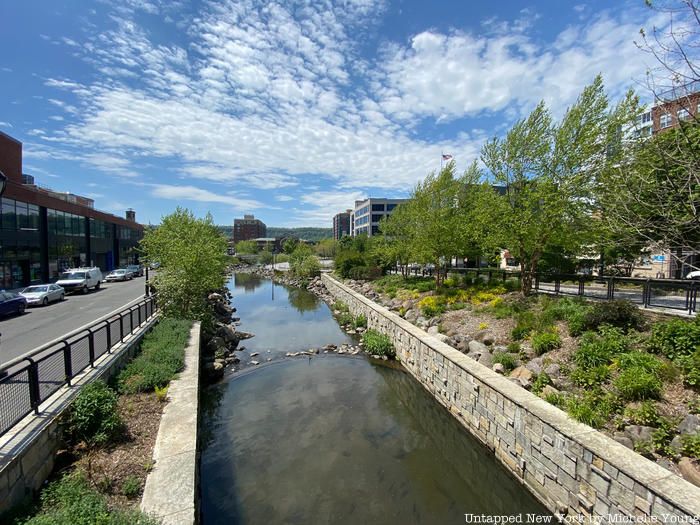
In the 2010s, the city of Yonkers carried out a $48 million project to uncover the river for six blocks in downtown Yonkers by removing the flume installed nearly 100 years earlier. This project was known as daylighting, a term used for the restoration of an originally open-air waterway that had been covered, typically by man-made projects. Similar restoration projects have been undertaken in New York City at sites like the Bronx River, Alley Creek, and the Harlem River, yet none have been as involved as the daylighting of the Saw Mill River.
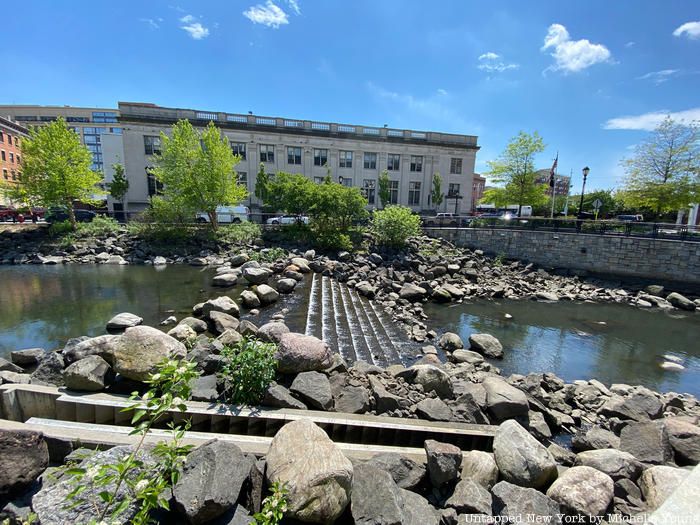
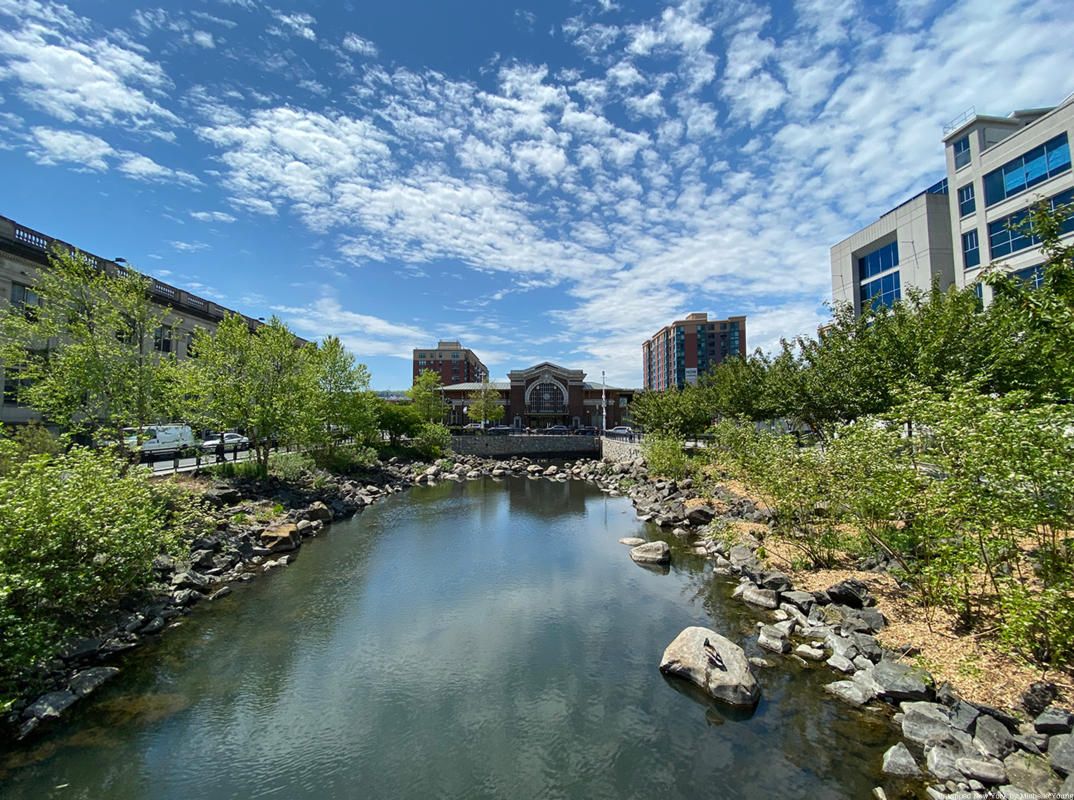
Originally known as the Nepperhan River, which means “rapid running water” in the language of the Lenape, the Saw Mill River served as a boundary between the Manhattan Indians and the Weckquaesgeek Indians. The area of downtown Yonkers was originally called “Nepeckamack,” or “fish trapping place,” inhabited by the Lenape. By 1639, however, the Dutch West India Company acquired the area that would later become Yonkers. In 1646, Adriaen Van der Donck, the first lawyer in the New World, was given a land grant for part of Yonkers including the Saeck-kill, which would later become the Saw Mill River. On the waterfalls of the river, he built one of the first mills in the New World, and eventually, Yonkers would take its name from Van der Donck, as his title was “Jonkheer,” or young gentleman.
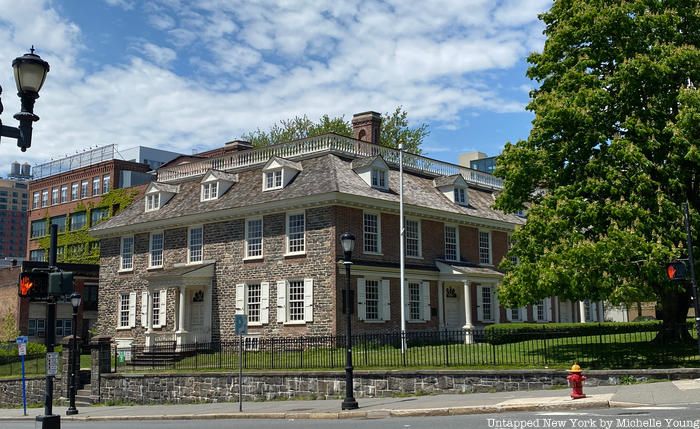
Philipse Manor Hall in Yonkers
By the end of the 17th century, the Dutch immigrant Frederick Philipse built the Philipse Manor Hall, now a National Historic Landmark, along the Saw Mill River in today’s Getty Square. The Saw Mill River was actually a fairly significant site of the Revolutionary War, including the 1776 Battle of White Plains. A number of Continental Army officers spent time along the river, including George Washington. The 1800s saw the Industrial Revolution in the northeast, and a number of factories sprouted up around the river, which included the Otis Elevator factory, which was founded by Elisha Graves Otis who patended a design that prevented an elevator from falling if its hoisting cable failed. Other employers in Yonkers included Alexander Smith & Sons Carpet Company and a number of sugar refineries.
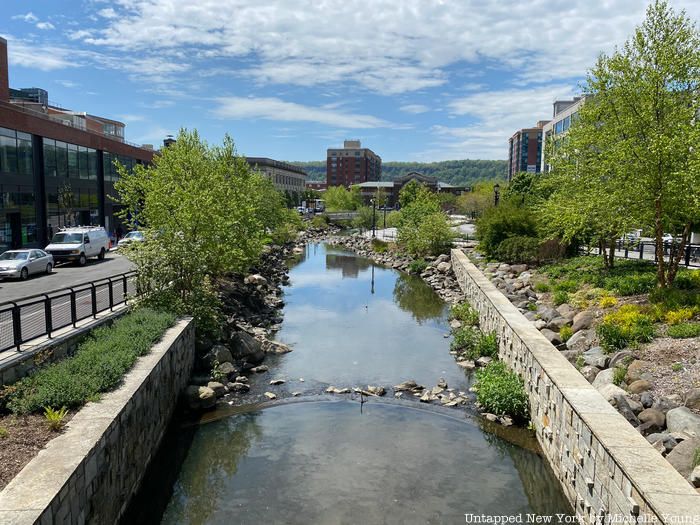
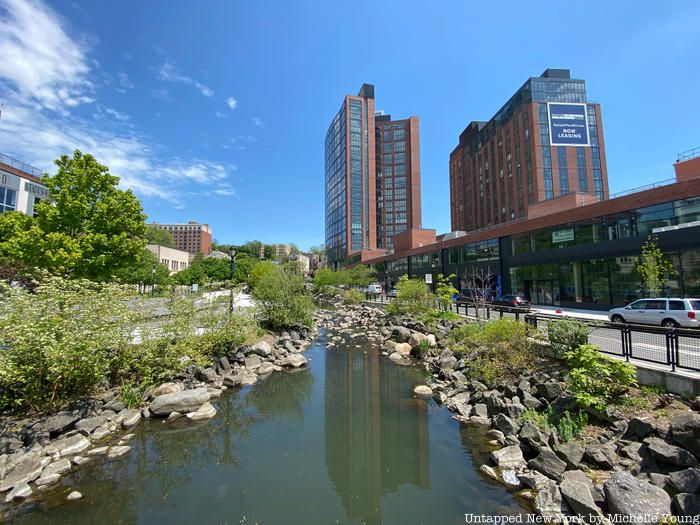
But as the river became more and more polluted by industrial and human waste, the river around Yonkers was encased in a flume and paved over in the 1920s. By 1920, the New York Health Department noted that the river’s sanitary conditions were unsatisfactory, and instead of trying to clean up the river, the city of Yonkers chose to cover the river entirely. Subsequently, Larkin Plaza, named after Mayor Thomas F. Larkin, was constructed over the river.
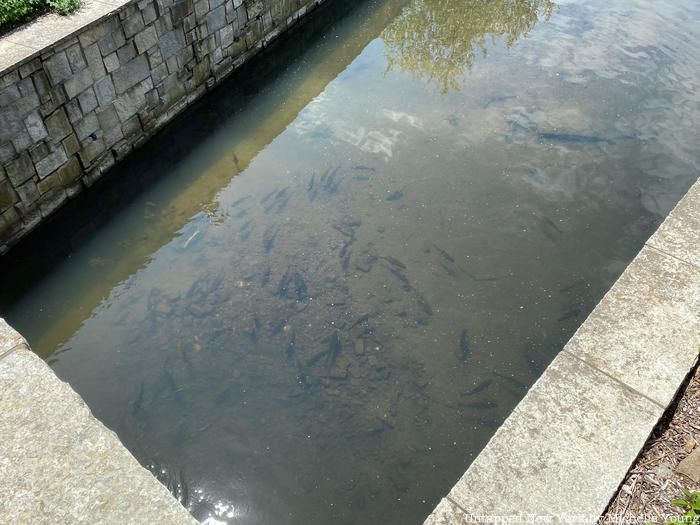
Fish in the freshwater portion of the daylighted Saw Mill River in Yonkers, now an Urban Fish and Wildlife Restoration Site
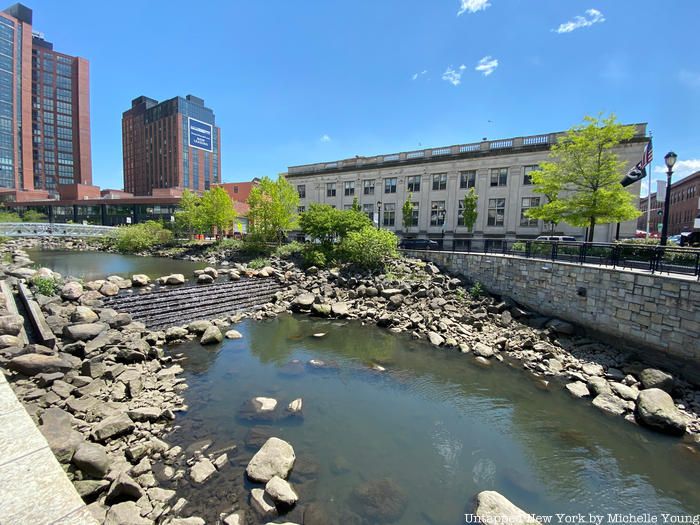
It wasn’t until the 1990s that the Army Corps of Engineers recommended daylighting the river, and in 1999, Governor George Pataki announced his commitment to the river’s restoration. Organizations like Groundwork Hudson Valley and Scenic Hudson provided ecological guidance, especially after a Yonkers sugar refinery spilled hydrochloric acid into the river in 2003. City funding and state grants were approved in 2010.
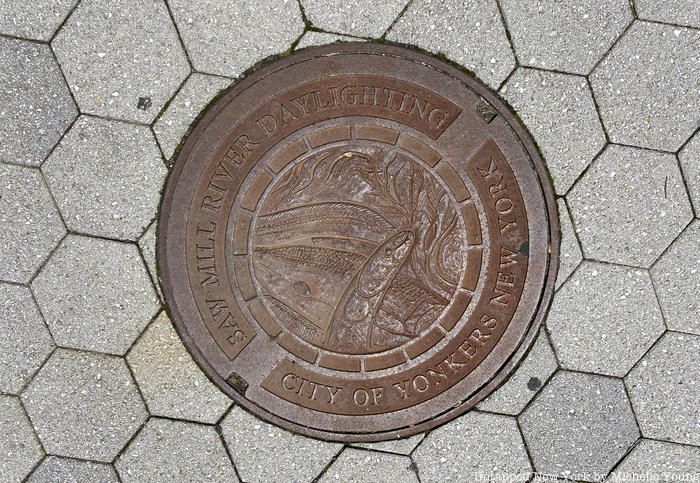
Construction began soon after, as industrial cables imbedded with diamonds cut the old flume into arch-shaped pieces. These arches were removed on October 25, 2010, opening the river to daylight for the first time in nearly 90 years. A concrete diversion chamber was installed to divert normal river flow into a new path through the park. Over 10 million gallons of water were pumped into the Hudson River during construction, since construction was often done below sea level. The path was lined with a heavy polymer sheeting since the soil nearby was contaminated by factories. Steel reinforcing bars were installed to strengthen concrete walls, and much of the old underground plume remains there today to prevent flooding in the park.
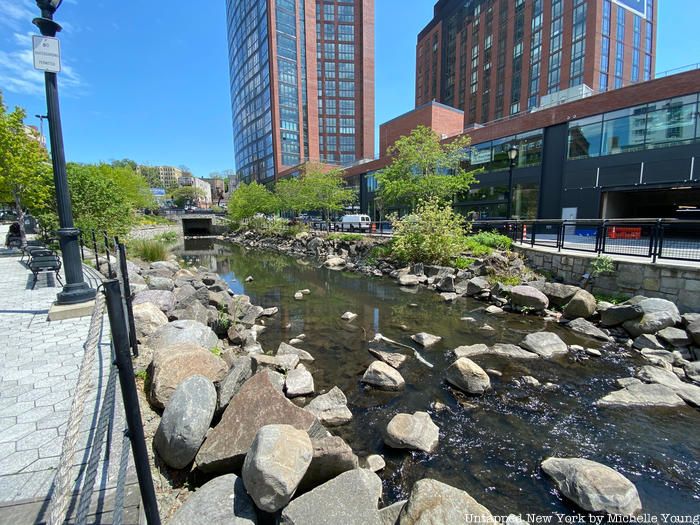 Netting chamber and concrete box in the distance
Netting chamber and concrete box in the distance
A large concrete box containing a netting chamber was installed underground to catch trash from upstream. The netting chamber catches at least 175 tons of trash per year. The city also installed a counter-flow passage to prevent the river’s American eels from getting caught in the net. Additionally, the city put in a fish ladder, which would allow fish traveling upstream to rest at each rung of the ladder. A number of steps were also added to create a waterfall and to prevent rising saltwater tides to reach the Saw Mill’s freshwater pool. To improve water quality, the city’s sewage drain was separated from a stormwater drain so that when it rains, no sewage goes into the water (New York City still has a combined sewer system, however). Rocks were placed alongside the river to create turbulence and increase the stream’s velocity.
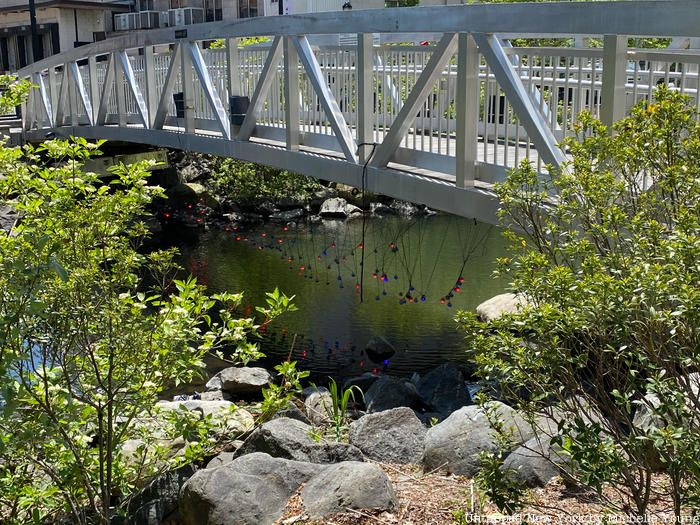
“Sound Bridge” art installation by composer John Morton on the Saw Mill River suspension pedestrian bridge.
Work was later done to expose the river in the Mill Street Courtyard of Yonkers, which was completed in August 2016. A number of walkways were installed over the river, which would subsequently increase real estate values in the area. What used to be a parking lot is now an open, vibrant river that brings life to the city of Yonkers. Art installations abound in Adrian Van der Donck Park, which encompasses the river and the public space around it, including “Sound Bridge,” a sound installation hanging from the suspension pedestrian bridge, colorful mosaics of local wildlife on the ground, and more.
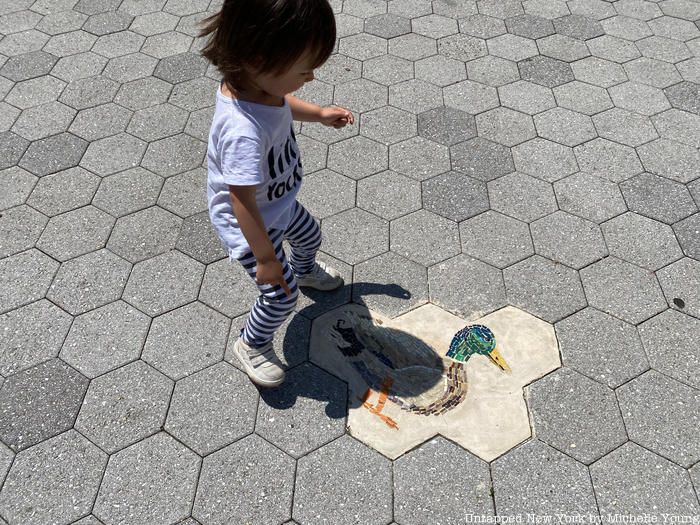
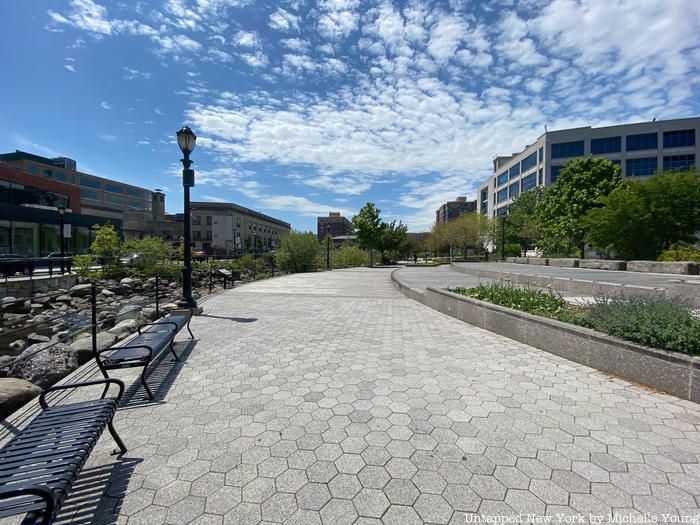
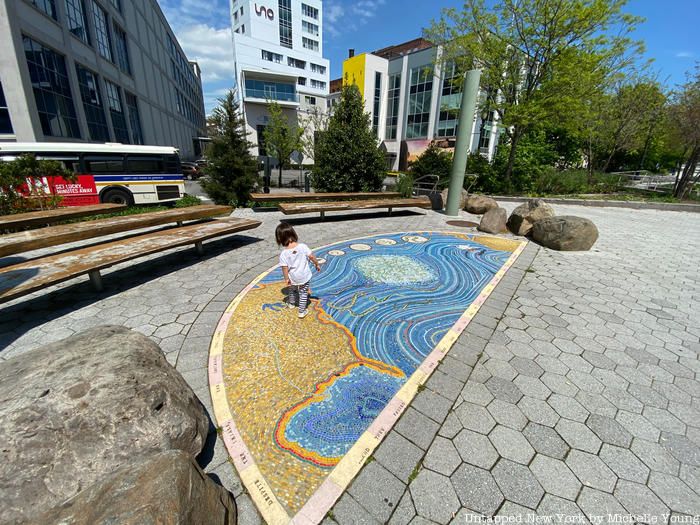
The Saw Mill River is one of the only ones in the northeast that has been daylighted, perhaps paving the way for more nature restoration projects in New York City in the coming years.
Next check out 28 Historic Estates to Visit in New York’s Hudson Valley!
Subscribe to our newsletter